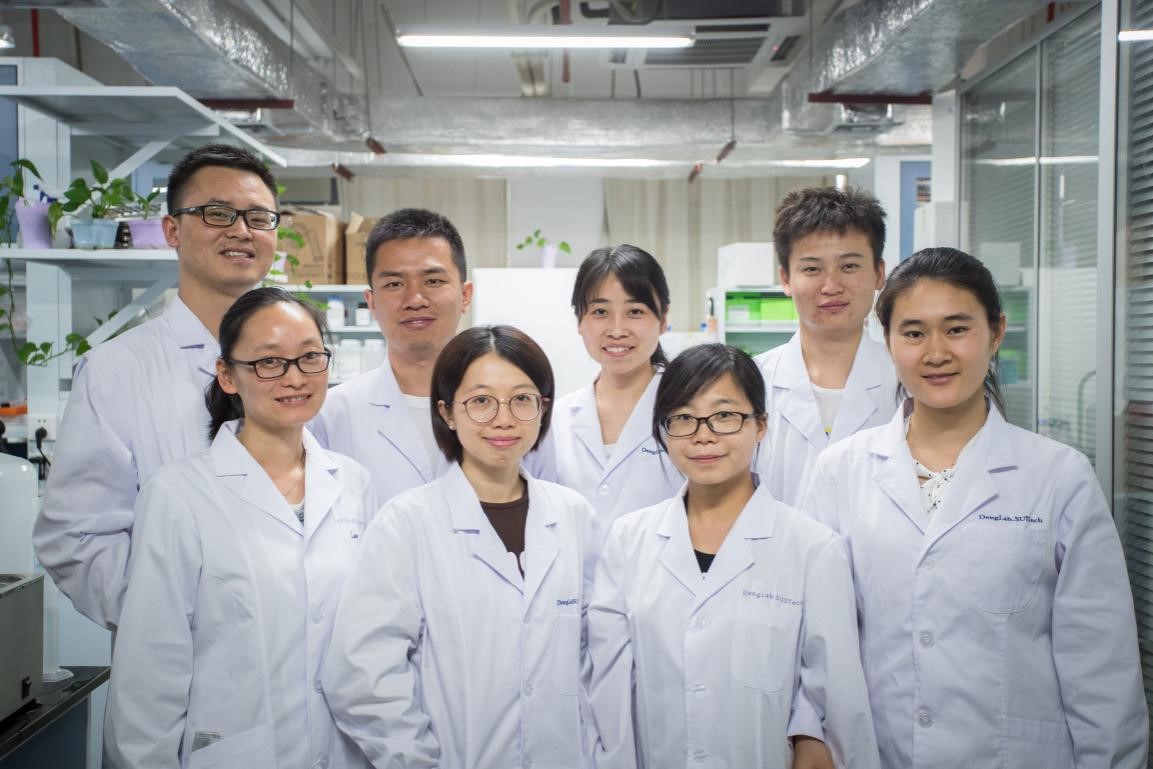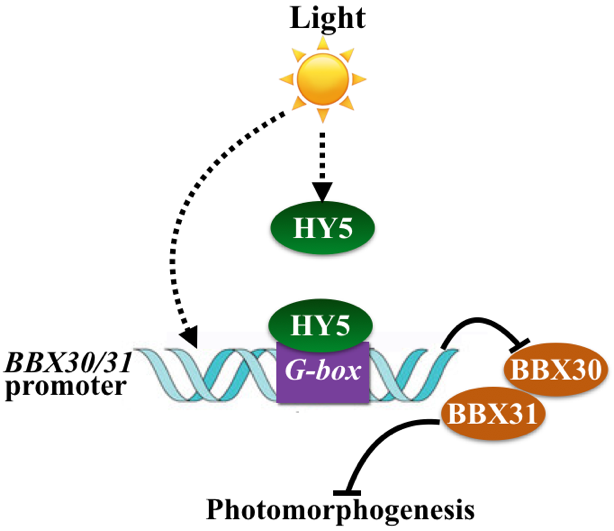The influence of light on specific photoreceptor cells within plants is responsible for every stage of a plant’s development, from seed to seedling to plant. Both the presence and absence of light influence the growth of plants while they are seedlings in different ways. Understanding how mutations in different photoreceptor cells can influence the growth of plants is critical to understanding changes in our environment.
On February 14, 2019, Professor Xing Wang Deng from Department of Biology, Southern University of Science and Technology (SUSTech) published an online research article entitled “B-box containing proteins BBX30 and BBX31, acting downstream of HY5, negatively regulate photomorphogenesis in Arabidopsis” in “Plant Physiology” journal. The group was seeking to understand the role that different mutations in two specific photoreceptor cells affect the growth of seedlings.

Senior Research Assistant Dr. Yueqin Heng and Visiting Scholar Dr. Fang Lin from the Institute of Plant and Food Science, Department of Biology, are the co-first authors; Professor Xing Wang Deng at SUSTech and Professor Dongqing Xu at Nanjing Agricultural University are the co-corresponding authors of the paper. Research Assistant Professor Dr. Yan Jiang, PhD student Tingting Yan, Senior Research Assistant Hongxia Lan, Post-doc Xianhai Zhao and Post-doc Hua Zhou at SUSTech are co-authors.

A working model depicting BBX30 and BBX31 in the regulation of photomorphogenesis
As light-mediated seedling development is controlled by a variety of key regulators, the team identified two B-box (BBX) containing proteins, BBX30 and BBX31, as repressors of photomorphogenesis. Photomorphogenesis is the process of growing in response to light, or in response to variations in the light spectrum. Elongated Hypocotyl 5 (HY5) is a central regulator of light signaling and directly binds to the G-box cis-element present in the promoters of BBX30 and BBX31.
The team found that HY5 negatively controls the transcription levels of BBX30 and BBX31 in the light. Seedlings with mutations in BBX30 orBBX31 were found to be hypersensitive to light, while abnormally high levels of either BBX30 or BBX31 lead to hypo-photomorphogenic growth. Further analysis revealed that the B-box domain of BBX30 or BBX31 is essential for their respective functioning in the regulation of photomorphogenic development in plants. In conclusion, BBX30 and BBX31 act as key negative regulators of light signaling, and their transcription is repressed by HY5 through directly associating with their promoters.
BBX proteins play critical roles in a variety of cellular and developmental processes, including photomorphogenesis, thermomorphogenesis, flowering, and the responsiveness of various plant hormones that occur in low concentrations, also known as phytohormones.
This work was supported by grants from National Key R&D Program of China 35 (2017YFA0503800), National Natural Science Foundation of China (31330048, 36 31621001), Peking-Tsinghua Center for Life Sciences, US NIH grant (GM-47850), and by Nanjing Agricultural University and Southern University of Science and Technology.
Link to paper: http://www.plantphysiol.org/content/early/2019/02/14/pp.18.01244
Proofread By
Photo ByInstitute of Plant and Food Science